Raising standards of coastal fish farms in S’pore with tilapia, the ‘chicken of the sea’
Sign up now: Get ST's newsletters delivered to your inbox
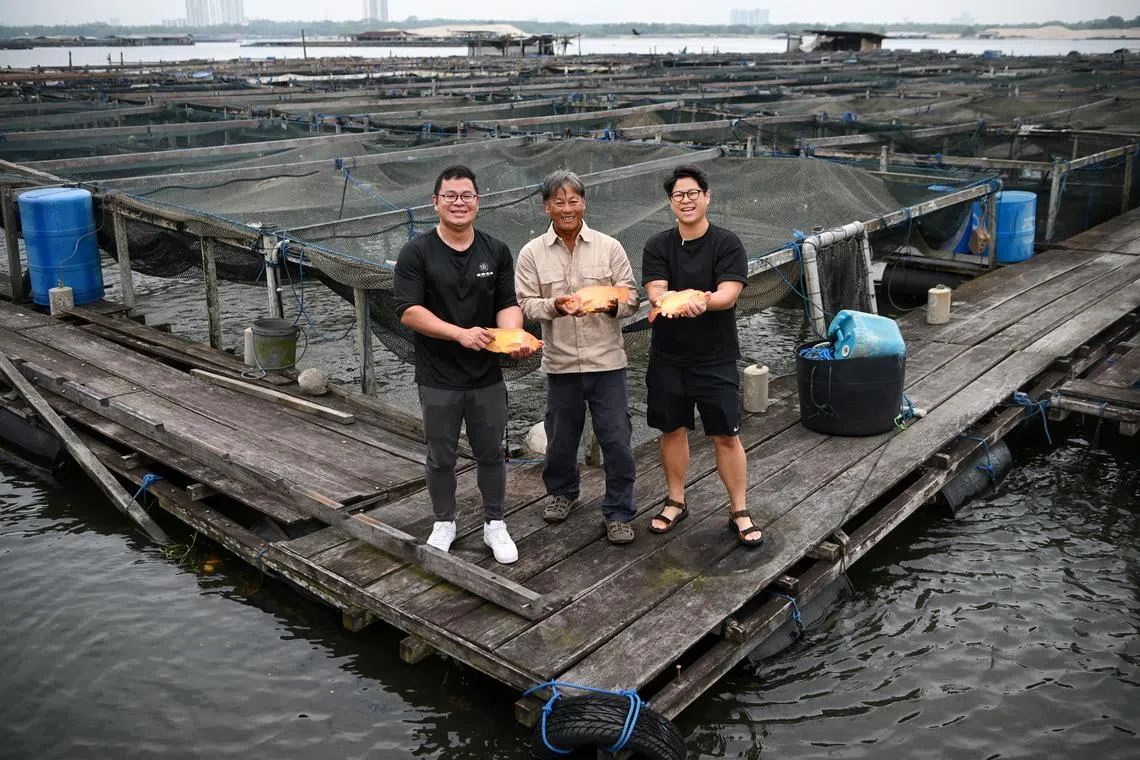
Heng Heng Fish Farm owner Yeo King Kwee (centre) with his son and farm co-owner Alvin Yeo (left) and daughter Albee Yeo, who works in the media industry.
ST PHOTO: KUA CHEE SIONG
Follow topic:
SINGAPORE – In the 1990s, fish farmer Yeo King Kwee would take his three children around the island to catch tilapia in longkangs (drains). The family’s catch did not become fried fish for dinner. Not yet, at least.
Mr Yeo would take the fish – which come in orange-pink, white and black – to his farm off Lim Chu Kang and let them breed in the waters of the West Johor Strait.
Around 2000, the self-taught farmer, now 62, took some courses on fish spawning, selective breeding and genetics by the then Agri-Food and Veterinary Authority of Singapore.
He learnt to identify fast-growing and meatier fishes, which he describes as “small head, big body”, to use as breeding fish.
Over many years, he bred the fish until he had strong shoals of hatched tilapia and juvenile fish in his at-sea nursery.
But during the early years, many of the juvenile fish died because they could not adapt to the sea’s higher salinity, said his older son Alvin Yeo, 34.
Wild tilapia also tend to be aggressive, and it took a while for the fish to grow together in an enclosed area.
It took around 30 years for the older Mr Yeo to perfect his breeding technique, and it was only five to six years ago that Heng Heng Fish Farm started selling tilapia on a larger scale, his son added.
The half-hectare fish farm has tens of thousands of tilapia in net cages, and Mr Yeo can harvest up to 30 tonnes of tilapia every year.
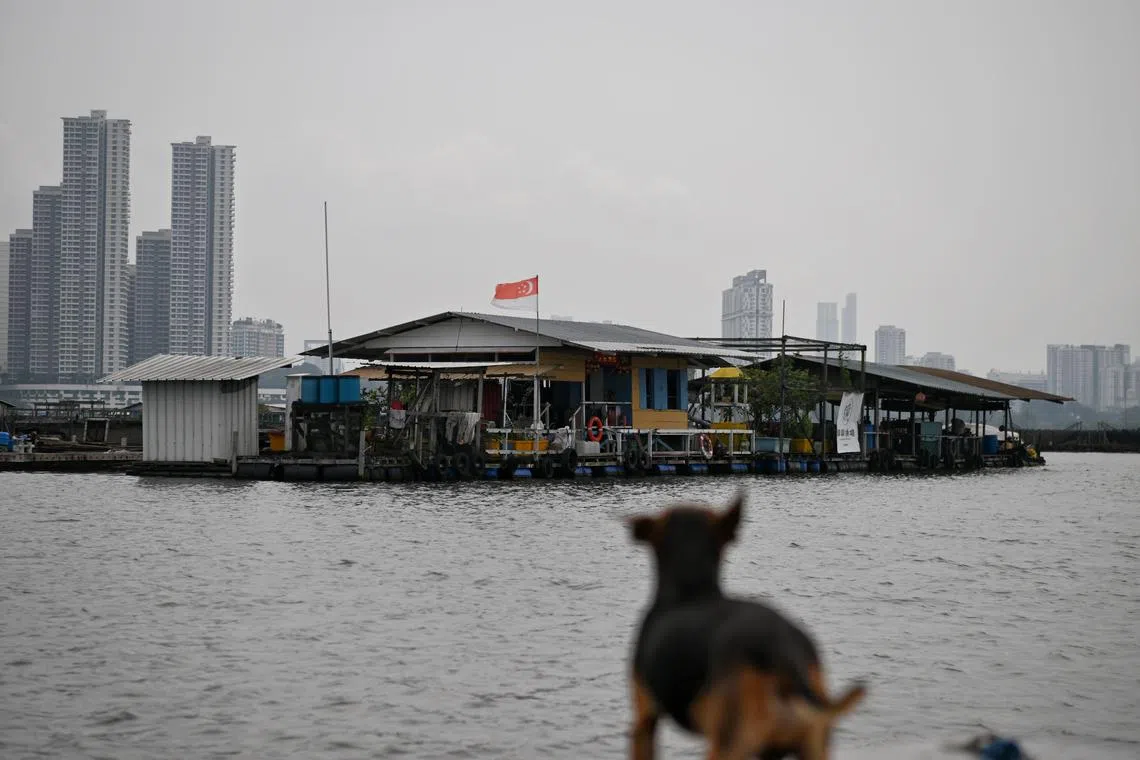
Heng Heng Fish Farm is about five to 10 minutes away by boat from a jetty in Lim Chu Kang.
ST PHOTO: KUA CHEE SIONG
At his humble farm, Mr Yeo is among a small number of traditional fish farmers here who can rear fish from spawn to harvest.
Fish hatcheries and nurseries are often associated with fancy facilities and high-tech equipment on land, which need the investment of large sums of money. Baby fish are sheltered in recirculating tanks. Most of the roughly 100 traditional farms across the Johor Strait import juvenile fish from abroad and grow them in their farms.
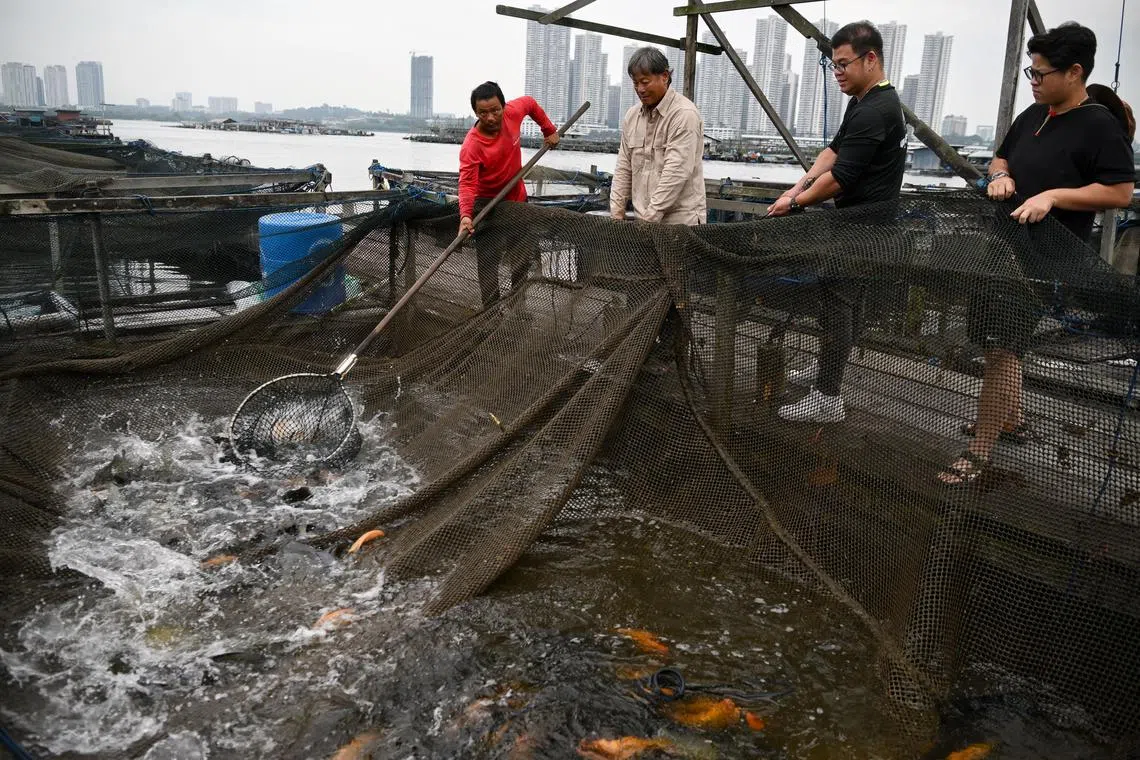
Farm owner Yeo King Kwee, 62, (second from left) with his son and co-owner Alvin Yeo, 34, (third from left) and daughter Albee Yeo, 31, who works in the media industry, helping to lift the net to catch harvest-ready marine tilapia at Heng Heng Fish Farm in the West Johor Strait.
ST PHOTO: KUA CHEE SIONG
When Singapore Agro-Food Enterprises Federation’s (Safef) chief executive Ken Cheong visited Heng Heng Fish Farm earlier in 2023, he was impressed by the school of 2cm-long newly hatched tilapia thriving in the waters.
Mr Cheong is on a mission to raise the business viability and standards of traditional open cage farms in the Johor Strait, and he sees marine tilapia as a promising species to start with.
“Tilapia is the chicken of the sea. It is hardy, easy to farm and takes between six and eight months to reach selling size,” he noted.
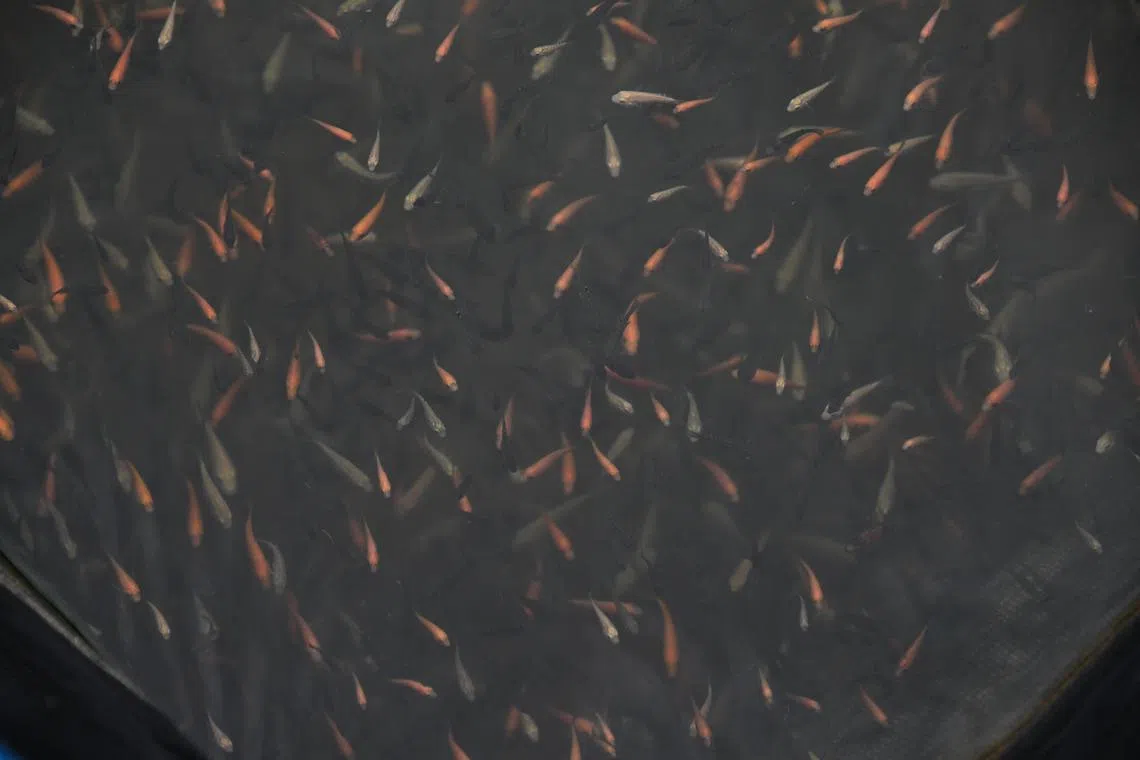
Tilapia fingerlings swimming at Heng Heng Fish Farm in the Johor Strait.
ST PHOTO: KUA CHEE SIONG
The more familiar barramundi (Asian sea bass) takes 1½ years to grow and tilapia can be less than half the price of the sea bass, he added.
The Republic’s nascent aquaculture sector accounts for 7.6 per cent of seafood consumed in the country in 2022.
Farms that are more productive and technology-driven, which contribute to the bulk of the nation’s aquaculture, are in the minority.
Safef is currently building a marine tilapia brand called The Straits Fish with some partners.
They include a few tilapia-growing farms such as Heng Heng and Opal Resources hatchery, Temasek Polytechnic’s (TP) Aquaculture Innovation Centre and a group comprising a fish feed producer, seafood processors, manufacturers and distributors.
The Straits Fish brand will help to distinguish locally grown tilapia from imported freshwater tilapia.
It is difficult to compete with the lower prices of imported tilapia at Jurong Fishery Port or wet markets, said Mr Cheong.
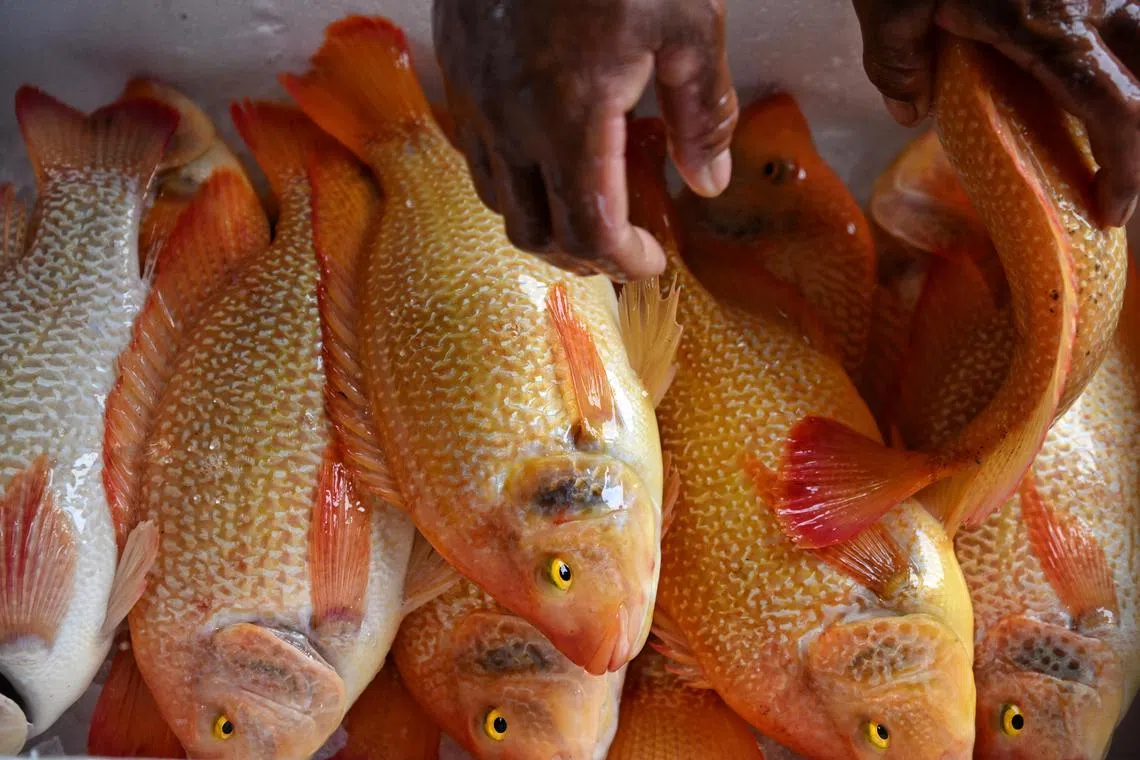
Year-old marine tilapia are ready to be packed for sale.
ST PHOTO: KUA CHEE SIONG
But current and future tilapia farms under The Straits Fish will need to adopt progressive and environmentally friendly farming practices, he added.
Mr Cheong said Safef aims to help raise the standards of traditional fish farms here.
Enter TP’s Aquaculture Innovation Centre, which is helping to draft a tilapia farming protocol that will set standards for proper husbandry and feeding practices, fingerlings, fish health and water quality.
The centre’s director, Dr Lee Chee Wee, is hoping to get the protocol drafted by the first quarter of 2024 at the earliest, and accredited to ensure quality and standards.
At several farms, fish are often fed with expired bread and confectionery, which are cheaper than protein-rich pellets.
But excess food pollutes the seabed and leads to nutrient build-up in the water, causing lower oxygen levels and increased risk of harmful algal blooms.
Mr Yeo switched to pelleted feed a few years ago.
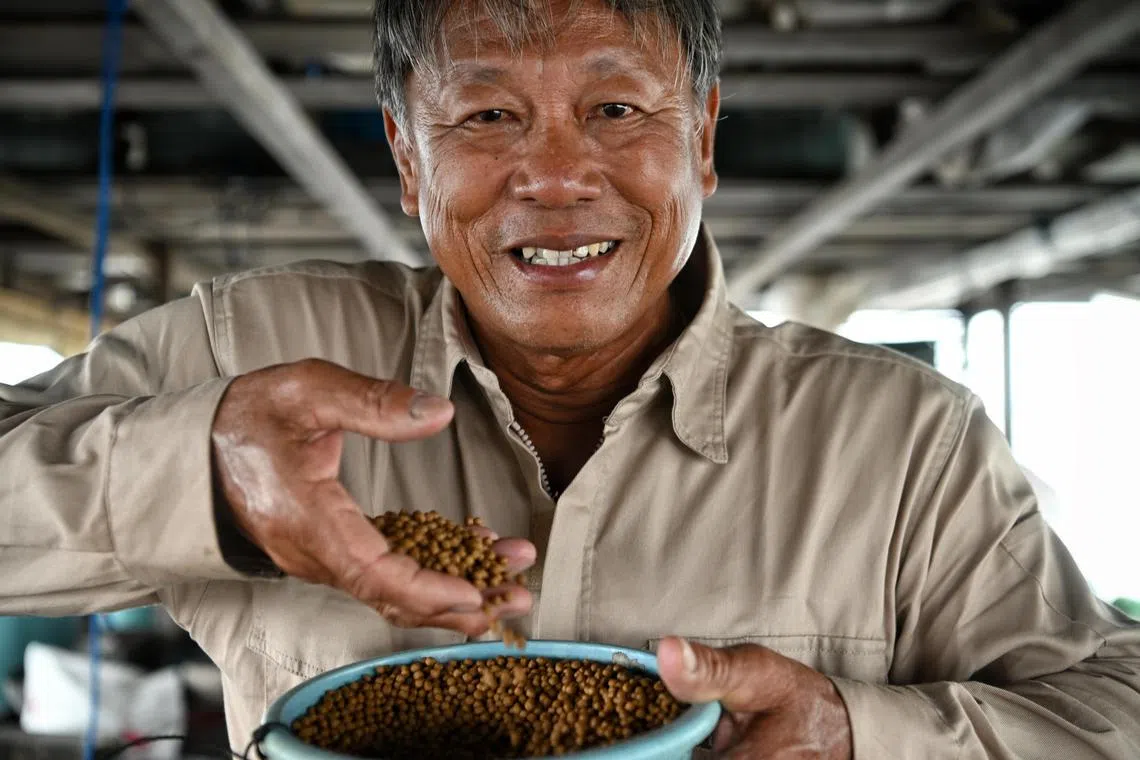
Mr Yeo King Kwee, 62, used to feed his fish with bread. He switched to pelleted feed a few years ago. He is now figuring out ways to reduce water pollution caused by excess feed.
ST PHOTO: KUA CHEE SIONG
This week, the Aquaculture Innovation Centre will also conduct feeding trials with Heng Heng’s tilapia to find out how much and what types of pelleted feed are needed for the optimal growth of the fish.
Fish feed can contribute up to 70 per cent of a farm’s production cost.
Dr Lee added: “A cost-effective feeding regime, stable and predictable prices of their harvests and high productivity of quality tilapia can be very attractive to local farmers.”
Under The Straits Fish brand – for which Safef has submitted a trademark application – Heng Heng is starting to expand from doing business with wet markets and fishery ports to working with food manufacturers and retailers to “dress up” its tilapia and raise fish sales.
At recent farmers’ markets, the Chang Cheng Group served grilled tilapia dishes with Japanese kabayaki sauce and sambal, in the style of sambal stingray. Seafood retailer Seaco is looking to process the tilapia and promote the fish to restaurants and customers.

The grilled tilapia dishes with Japanese kabayaki sauce (bottom) and sambal (top).
PHOTO: KEN CHEONG
Many Singaporeans are familiar with freshwater tilapia, which are grown in ponds and have an unappealing muddy taste because of cyanobacteria accumulating in the enclosed water, said Mr Yeo.
Most of the tilapia from Malaysia, Vietnam and China are freshwater ones. But marine tilapia grown in the open waters will not have that muddy taste, Mr Yeo said.
His son Alvin added: “Tilapia’s flavour comes from the water’s taste… This also boils down to why we need to protect the water quality here.”


